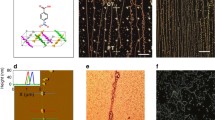Abstract
Nano fabrication of carbon based molecular domain called electro-magnetic nano domain is identified here as an extension of our earlier work on carbon optimized domain in biological systems. Identification suggests that nano fabrication of silicon chip can be replaced by carbon domain where carbon value works out to be both least conductor and conductor. Carbon rich portion attenuate electrons while the carbon domain with defined value highly conductor of current. Demonstrations are here to show how carbon value possesses a dual character of electrical conductance and least conductance. It is hoped that the principle of 31.45% of carbon around individual atoms is individually fabricated for the domain. The results are in agreement to the above value. The carbon fraction distributions in viral protein reveal that it follows an abnormal carbon fraction distribution than that of normal one. It is demonstrated that the carbon fraction distribution plays an important role in deciding the structure and assembly of the proteins. It will be helpful in understanding the molecular structure and nano fabrication of electronic devices. Clue on fabrication technology has been introduced in order to fabricate information technology for tomorrow’s computer and allied nature.
Access this chapter
Tax calculation will be finalised at checkout
Purchases are for personal use only
Similar content being viewed by others
References
Kauzmann, W.: The three dimensional structures of proteins, Biophys J. 4, 43–54 (1964).
Rajasekaran, E., Jayaram, B. and Honig, B.: Electrostatic interactions in aliphatic dicarboxylic acid: a computational route to the determination of pKa shifts, J. Amer. Chem. Soc. 116, 8238 (1994).
Rajasekaran, E.: CARd: Carbon distribution analysis program for protein sequences, Bioinformation 8(11), 508–512 (2012).
Rajasekaran, E. and Vijayasarathy, M.: CARBANA: Carbon analysis program for protein sequences, Bioinformation 5(10), 455–457 (2011).
Coey, J.M.D., Venkatesan, M., Fitzgerald, C.B., Douvalis, A.P., Sanders, I.S.: Ferromagnetism of a graphite nodule from the canyon diablo meteorite, Nature 420, 156–159 (2002).
Rajasekaran, E.: Domains based in carbon dictate here the possible arrangement of all chemistry for biology, Int. J. Mol Biol-Open Access, 3(5), 240–243 (2018).
Akila, K., Rajendran, K. and Rajasekaran, E.: Carbon distribution to toxic effect of toxin proteins, Bioinformation 8(15), 720–721 (2012).
Akila, K., Sneha, N. and Rajasekaran, E.: Study on carbon distribution at protein regions of disorder, Int. J. Biosci. Biochem. Bioinfo. 2(2), 58–60 (2012).
Amri, E., Mamboya, A.F., Nsimama, P.D. and Rajasekaran, E.: Role of carbon in crystal structures of wild-type and mutated form of dihydrofolate reductase-thymidylate synthase of P. falciparum, Int. J. Appl. Biol. Pharm. Tech. 3(3), 1–6 (2012).
Rajasekaran, E., Jacob, A. and Heese, K.: Magnitude of thymine in different frames of messenger RNAs, Int. J. Bioinfo. Res. 4(3), 273–275 (2012).
Anandagopu, P., Suhanya, R., Jayaraj, V. and Rajasekaran, E.: Role of thymine in protein coding frames of mRNA sequences, Bioinformation 2(7), 304–307 (2008).
Jayaraj, V., Suhanya, R., Vijayasarathy, M., Anandagopu, P. and Rajasekaran, E.: Role of large hydrophobic residues in proteins, Bioinformation 3(9), 409–412 (2009).
Author information
Authors and Affiliations
Editor information
Editors and Affiliations
Rights and permissions
Copyright information
© 2020 Springer Nature Switzerland AG
About this chapter
Cite this chapter
Ekambaram, R., Rajasekaran, M., Rajasekaran, I. (2020). Paradigms in Computer Vision: Biology Based Carbon Domain Postulates Nano Electronic Devices for Generation Next. In: Smys, S., Iliyasu, A.M., Bestak, R., Shi, F. (eds) New Trends in Computational Vision and Bio-inspired Computing. Springer, Cham. https://doi.org/10.1007/978-3-030-41862-5_35
Download citation
DOI: https://doi.org/10.1007/978-3-030-41862-5_35
Publisher Name: Springer, Cham
Print ISBN: 978-3-030-41861-8
Online ISBN: 978-3-030-41862-5
eBook Packages: Mathematics and StatisticsMathematics and Statistics (R0)




